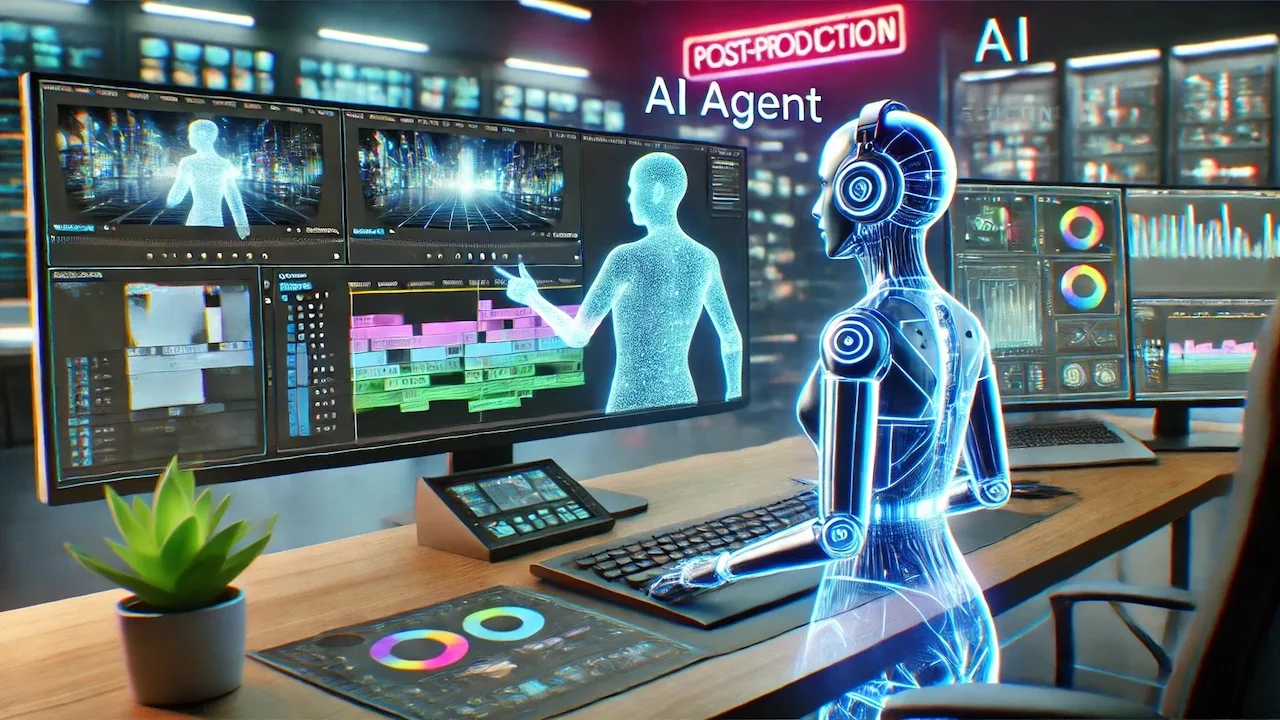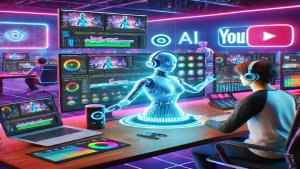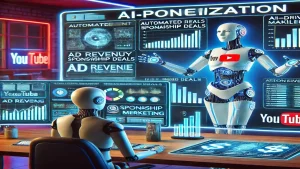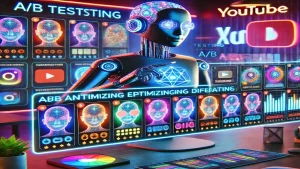Video content dominates the digital space, but keeping viewers hooked remains a challenge. Enter the AI agent for video editing, a powerful tool that transforms how creators understand and engage their audience. By analyzing viewer behavior, these intelligent systems uncover patterns that drive watch time, boost retention, and spark meaningful connections. This article explores the science behind these agents, offering you a deep understanding of how they elevate video performance. Expect actionable insights grounded in real-world applications, tailored for anyone eager to master video engagement.
Understanding Viewer Behavior Through AI Technology
Viewers decide within seconds whether to stay or leave a video. An AI agent for video editing steps in by dissecting how people interact with content. It examines clicks, pauses, rewinds, and drop-off points to reveal what resonates. Unlike traditional methods, this technology processes vast data sets quickly, providing clarity on audience preferences. For example, if viewers consistently skip a segment, the AI flags it, prompting creators to rethink pacing or visuals.
Behavior analysis goes beyond surface-level guesses. It taps into emotional triggers, attention spans, and viewing habits. Imagine a scenario where a tutorial video loses viewers at the five-minute mark. The AI might suggest tightening the script or adding a visual hook. By aligning edits with viewer reactions, creators craft content that feels intuitive and compelling.
The Role of Retention Metrics in Video Success
Retention metrics measure how long viewers stick around. An AI agent for video editing uses this data to pinpoint strengths and weaknesses. High retention signals engaging material, while sharp drops highlight areas needing work. Platforms like YouTube provide retention graphs, but AI takes it further by suggesting precise fixes. For instance, it might recommend trimming a slow intro to keep momentum flowing.
Consider a vlog with a 60% retention rate at the halfway point. The AI could analyze viewer exits and propose adding a call-to-action or dynamic transition. These adjustments, rooted in data, turn passive watching into active engagement. Retention isn’t just a number; it’s a window into audience satisfaction.
How AI Agents Process Watch Time Analysis
Watch time analysis tracks the total minutes viewers spend on a video. An AI agent for video editing breaks this down to show which parts hold attention and which lose it. Longer watch times often correlate with higher platform rankings, making this metric vital for visibility. The AI doesn’t just report numbers; it interprets them to guide editing decisions.
Picture a gaming video where viewers drop off during lengthy commentary. The AI might suggest cutting filler or overlaying gameplay footage to maintain interest. By focusing on watch time, creators learn to balance storytelling with entertainment. This process builds a feedback loop, refining content with each upload.
Watch time also reflects viewer intent. Short, snappy videos might suit casual browsers, while in-depth reviews attract dedicated fans. The AI adapts edits to match these patterns, ensuring every second counts. Over time, this sharpens a creator’s ability to predict what works.
Breaking Down Viewer Attention Spans
Attention spans vary widely, influenced by age, interests, and context. An AI agent for video editing maps these shifts, revealing how long different segments hold focus. It might find that younger audiences prefer quick cuts, while older viewers tolerate slower builds. This insight shapes editing styles to fit target demographics.
Suppose a travel vlog sees a dip during scenic montages. The AI could propose adding narration or upbeat music to sustain energy. By tailoring content to attention patterns, creators avoid losing viewers to distraction. It’s about meeting people where they are, not forcing them to adapt.
Personalized Recommendations Powered by AI
Personalized recommendations elevate engagement by matching content to individual tastes. An AI agent for video editing studies viewer history, likes, and comments to suggest edits that align with preferences. This isn’t guesswork; it’s a calculated approach to deepen connections. For example, if fans love humor, the AI might prioritize funny clips in the final cut.
Think of a cooking channel with a diverse audience. The AI could recommend shorter recipes for busy viewers and detailed breakdowns for enthusiasts. This flexibility keeps content relevant across groups, boosting satisfaction. Personalization turns generic videos into tailored experiences, fostering loyalty.
Data from platforms like Genyoutube shows how AI-driven insights enhance reach. By adapting to viewer quirks, creators build trust and encourage repeat visits. It’s a subtle yet powerful way to stand out in a crowded space.
Enhancing Emotional Resonance
Emotions drive engagement. An AI agent for video editing identifies moments that spark joy, curiosity, or excitement. It might highlight a heartfelt story or a thrilling reveal, urging creators to amplify these beats. Emotional resonance keeps viewers invested, turning casual clicks into lasting impressions.
Imagine a documentary where a quiet interview moves viewers to tears. The AI could suggest lingering on that scene, paired with soft music, to heighten impact. By focusing on feelings, creators craft videos that linger in memory. This approach taps into the human side of data, blending art with science.
Practical Applications of AI in Video Editing
AI agents don’t just analyze; they act. Tools like those explored in AI Agent for Video Editing automate cuts, transitions, and effects based on viewer data. This saves time while ensuring edits align with audience behavior. Creators can focus on storytelling, knowing the tech handles the details.
For instance, an AI might shorten a rambling intro or enhance a thumbnail’s appeal, as seen in AI Agents For YouTube Thumbnails Learning. These tweaks, informed by analytics, lift click-through rates and retention. It’s a practical bridge between raw footage and polished content.
Optimizing for Platform Algorithms
Platforms like YouTube reward videos that keep viewers watching. An AI agent for video editing aligns content with these algorithms by prioritizing retention and watch time. It might suggest restructuring a video to front-load value, ensuring viewers stay past the critical first 30 seconds.
Take a tech review that buries its key points. The AI could reorder segments, placing the verdict upfront. This satisfies both viewers and algorithms, boosting rankings. Creators gain visibility without gaming the system, relying instead on smart, data-backed edits.
Challenges and Limitations of AI Agents
AI isn’t flawless. An AI agent for video editing might misread nuanced intent or over-rely on data, missing creative risks that pay off. For example, a bold artistic choice might tank retention initially but build a cult following later. Human oversight remains key to balance innovation with analytics.
Data quality also matters. If viewer inputs are skewed or limited, recommendations falter. Creators must pair AI with intuition, especially for niche audiences. The tool enhances, not replaces, the human touch that defines standout content.
Balancing Automation and Creativity
Automation speeds up editing, but creativity sets videos apart. An AI agent for video editing excels at routine tasks, like trimming dead air, yet struggles with abstract vision. A filmmaker might want a surreal sequence that defies metrics, and that’s where judgment steps in.
Consider a music video with experimental pacing. The AI might push for conventional cuts, but the artist’s instinct prevails. Blending both creates a hybrid workflow: AI handles efficiency, while humans steer the soul. This synergy unlocks the best of both worlds.
Real-World Examples of AI-Driven Success
AI agents power real results. A creator using AI Agents for YouTube Creators might see watch time double after optimizing intros. Another, leveraging How to Make Viral Videos, could craft a hook that explodes in shares. These tools turn data into action.
Picture a fitness channel struggling with engagement. After applying AI suggestions from AI Agents in Video Content Creation, it shortens workouts and adds upbeat overlays. Views soar. These cases show AI’s tangible impact on growth.
Table: AI Agent Features and Benefits
| Feature | Benefit | Example Use Case |
|---|---|---|
| Retention Analysis | Identifies drop-off points | Shortening a slow intro |
| Watch Time Tracking | Boosts platform ranking | Reordering key segments |
| Personalization | Tailors to viewer tastes | Highlighting humor clips |
This table simplifies how AI features translate to benefits, offering a quick reference for learners.
Future Trends in AI Video Engagement
AI keeps evolving. Soon, agents might predict trends before they peak, as explored in AI Agent for Video Monetization. Real-time editing during live streams could also emerge, adapting to viewer reactions instantly. These advances promise even deeper engagement.
For creators, staying ahead means embracing tools like those in YouTube Channel Growth. Future AI might even suggest YouTube Video Ideas based on behavior shifts. The horizon brims with possibility.
Final Thoughts on AI and Viewer Engagement
An AI agent for video editing isn’t a magic fix, but a partner in understanding viewers. It decodes retention metrics, watch time, and preferences, handing creators the keys to captivate. By blending this tech with human creativity, you craft videos that inform, entertain, and connect. Start experimenting today, and watch your engagement climb.



